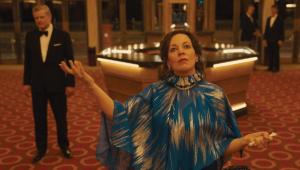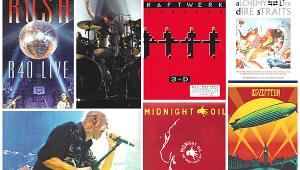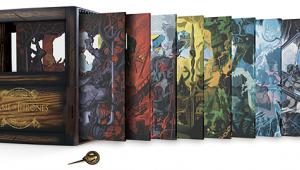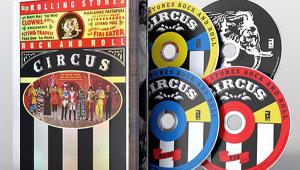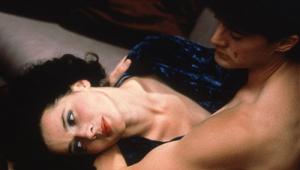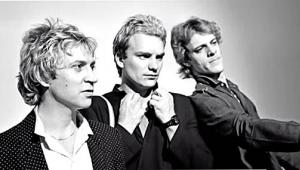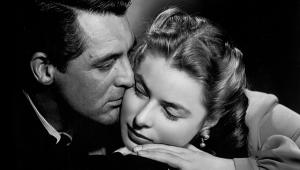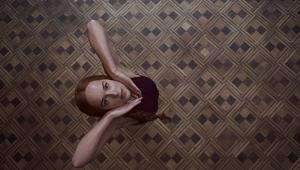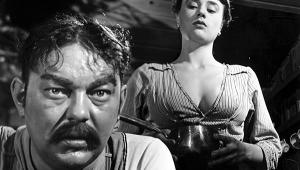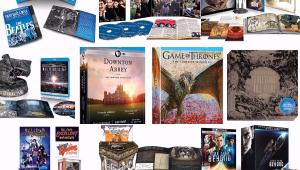DVD Review: Heroes

| Universal Series ••••½ Picture ••••½ Sound •••½ Extras ••••½ |
Heroes has also joined the ranks of 24 and Lost as one of the best-looking shows on TV, as each installment is of feature-film caliber. On DVD, it's an absolute marvel to behold. Each episode practically begs multiple viewings just to revisit all of the savory eye candy made possible by the strong choices from the cinematographers and art directors.
In the extended, 73-minute pilot, "Genesis," the contrast between the blue and white umbrellas deployed by a pair of genetics professors who argue as they walk across a bustling marketplace in Bombay sets the stage for two of the show's most important colors. In Episode 4, blue tones dominate not only the confrontation between table-strapped mind-reading cop Matt Parkman (Greg Grunberg) and the enigmatic HRG (Jack Coleman), but also the scene aboard a frozen-in-time subway car where Future Hiro (Masi Oka) delivers an important message/catchphrase to Peter Petrelli (Milo Ventimiglia), the budding power-absorber. In Episode 8, these tones permeate the soothing Indian waters where idealistic genetics professor Mohinder Suresh (Sendhil Ramamurthy) scatters his father's ashes, and they also frame the New York City cab where he sees his father murdered during a visionary dream. Most tellingly, in Episode 16, blue is contrasted with pink during a tense scene between Mohinder and the power-hungry parasite Sylar (Zachary Quinto) outside a Montana motel. In this episode's commentary, director Greg Beeman discusses the color choices for that scene shot by shot with both of the actors present, pinpointing the exact moment when the pink that frames Sylar turns to blue as soon as he speaks his own name. (More on this set's fantastic commentaries in a bit.)
White also gets its due, often in blown-out, super-saturated fashion, such as when Sylar murderously breaks out of captivity in Episode 11 and when the hands of radioactive Ted Sprague (Matthew John Armstrong) go nuclear in Episode 12. In general, the show's color palette is quite rich. I love how, in the pilot, the green turf on the roof of Yamagato Industries in Tokyo - where office drone-cum-time traveler Hiro Nakamura (the aforementioned Oka) joins his fellow workers for exercise - practically glistens. The scene reminded me of a Monopoly board, thanks to an overhead shot of all the symmetrically placed employees that soon zeroes in on Hiro as he squints at an impending eclipse. (It's revisited in an extremely different context during the final sequence of the season finale, which serves as the opening gambit for the initial chapter arc for Season 2.)
Reds are, of course, in abundance, from the sweet cherry Cadillac convertible driven by Jessica/Niki (Ali Larter) to the blood that's sloshed around on faces, arms, torsos, and floors (pick an episode, any episode). That being said, the blood that poured down the forehead of quick-study waitress Charlie Andrews (Jayma Mays) in Episode 8 looked a bit too brownish to me - more like chocolate syrup, actually.
Special mention must be made of the vivid, future-predicting paintings by the tortured, drug-addled artist Isaac Mendez (Santiago Cabrera). All of them are courtesy artist Tim Sale, a legend in comic-book circles. Sale is profiled in one of the set's many excellent extras on Disc 7. There, he reveals that (gasp) he's actually color blind and does all of his artwork in black and white with "shades of gray" (hmm, just like the show itself).
- Log in or register to post comments
